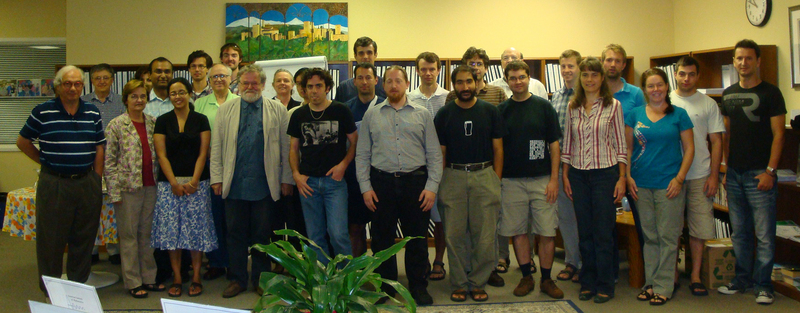Graph and hypergraph limits
August 15 to August 19, 2011
at the
American Institute of Mathematics,
San Jose, California
organized by
Oleg Pikhurko,
Balazs Szegedy,
and Jaroslav Nesetril
Original Announcement
This workshop will be devoted to the
emerging theory of graph and hypergraph limits. The potential power and
applicability of these concepts comes in the fact that for some definitions of
convergence the corresponding limits have many different
representations. For example, the limits of left-convergent sequences
of graphs can be represented by 2-variable symmetric measurable
functions, exchangeable distributions on infinite graphs, or
reflection-positive graph parameters.
The aim of the workshop is both to develop the general theory of some
natural notions of convergence (such as convergence of bounded-degree graphs,
left-convergence of graphs and k-uniform hypergraphs) as well as to find
ways of applying limits to concrete questions about finite
structures, most notably to extremal (hyper)graph problems.
Some of the main open problems that the workshop will focus on are the
following.
- The Aldous-Lyons Conjecture: For every graphing there is a sequence
of bounded degree graphs convergent to it.
- Lovász' Conjecture: Every feasible finite system of linear
inequalities in subgraph densities has a solution which is finitely
forcible.
Material from the workshop
A list of participants.
The workshop schedule.
A report on the workshop activities.
Papers arising from the workshop:
Linear embeddings of graphs and graph limits
by Huda Chuangpishit, Mahya Ghandehari, Matt Hurshman, and Jeannette Janssen,
J. Combin. Theory Ser. B 113 (2015), 162-184 MR3343752Quasirandom permutations are characterized by 4-point densities
by Daniel Kral' and Oleg Pikhurko,
Geom. Funct. Anal. 23 (2013), no. 2, 570-579 MR3053756Asymptotic structure of graphs with the minimum number of triangles
by Oleg Pikhurko and Alexander Razborov,
Combin. Probab. Comput. 26 (2017), no. 1, 138-160 MR3579594Emergent structures in large networks
by David Aristoff and Charles Radin,
J. Appl. Probab. 50 (2013), no. 3, 883-888 MR3102521

